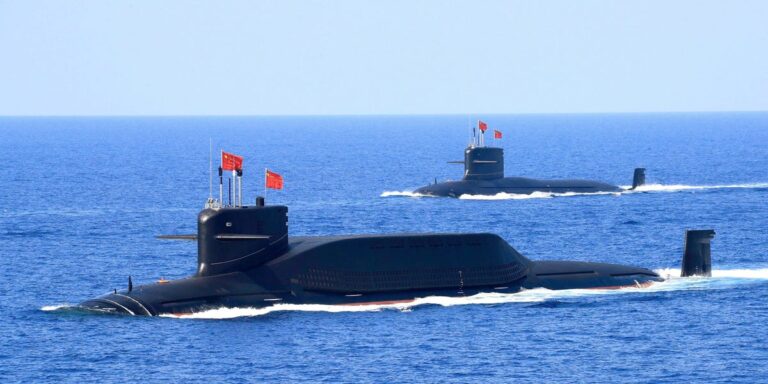- The United States and China are in a race to develop cutting-edge submarines.
- Chinese researchers say they have made a breakthrough in laser propulsion technology that could one day be used in submarines and missiles.
- A laser propulsion expert at McGill University told Business Insider that that claim is flawed.
Submarines have long been known as silent hunters of the deep, lurking beneath the surface.
However, as sonar systems improve, it has become important to minimize the sound of all shipboard components to avoid detection. In particular, the mechanical sounds of the propellers, generators, and reactor cooling systems that help propel the submarine forward.
A team of engineers from China’s Harbin University claims to have taken a step forward in developing technology that would make submarines nearly silent and extremely fast, the South China Morning Post reported.
Scientists say they have discovered a way to propel submarines using lasers rather than relying on nuclear or battery power, a method known as underwater laser propulsion.
In theory, the submarine could be covered in a web of tiny optical fibers that emit laser pulses, the scientists wrote in the journal Acta Optica Sinica.
Tiny laser pulses emitted from the fiber vaporize seawater, creating plasma, a substance created when gases are heated.
The plasma then expands, creating an explosive wave that acts as an opposing force on the submarine, propelling it forward.
Numerous high-power laser beams placed at various angles around the submarine could generate about 70,000 newtons of thrust, propelling the submarine forward at roughly the same speed as a commercial jet, according to the SCMP.
Ge Yang, the project’s lead researcher, said the technology could also be used for underwater missiles and torpedoes, “significantly increasing the underwater range,” the newspaper reported.
stealth and speed
The team of scientists says this process increases not only speed but also stealth.
Using lasers can also induce a process known as “supercavitation.” This creates a coating of air bubbles around the object in the water, reducing drag and making the object move faster.
This technology has already been used in the Russian Shkvar torpedo since the 1970s, and uses rocket exhaust rather than laser power.
But Professor Andrew Higgins, who leads a team at McGill University developing laser propulsion technology for space travel, doesn’t believe lasers would be powerful enough to cause this “bubble” effect around a torpedo, let alone a submarine. do not have.
“Cavitation can be induced in the front of a torpedo by spikes or the exhaust of a forward-facing rocket. Will the torpedo be able to carry enough power to power the laser that continuously performs this maneuver? I doubt it,” he told Business Insider.
And for the laser to generate enough thrust to propel the entire submarine?
“I’m even more skeptical,” Higgins said. “The overall average thrust is low and the jet power cannot exceed the laser power.”
“Even with the high efficiency of today’s lasers, this approach is not as efficient as a propeller, so you don’t get any net propulsion.”
As SCMP points out, Japanese researchers first proposed this type of laser propulsion method 20 years ago, but for decades the technology had been limited to producing only one millionth of a newton of thrust. could not.
Controlling the direction of the plasma blast wave to steer the submarine is another matter.
According to SCMP, Chinese researchers said their unique design of microcavities within the optical fiber increased the efficiency of the thrust and guided the direction of the force.
However, they acknowledge that there are many challenges to overcome before the technology can be applied to submarines.
Higgins said the technology also avoids a key problem with claims that it reduces noise. In other words, cavitation is “due to acoustic effects.”
“Propelling nuclear submarines in this way is neither feasible nor desirable.”
“For nuclear submarines, acoustic stealth is the primary objective, and great efforts are expended to avoid cavitation.”
Competition to improve military capabilities
Laser propulsion technology for submarines is currently in the theoretical stage, but the United States is locked in a race with China to develop advanced military capabilities.
Harbin University, where the researchers are based, is a center of Chinese military development and is listed as “very high risk/top secret” on Australia’s China National Defense University Tracker.
In 2018, 52% of universities’ total research budgets went to defense research, according to the tracker.
China currently operates 60 submarines, compared to the United States’ 67. However, while the US submarine count has stagnated, China’s submarine count is expected to increase to 80 by 2035.
Although China’s navy is the world’s largest in terms of numbers, analysts say it is less technologically advanced and less experienced than the United States.

